Nissan is a Japanese car manufacturer, established in 1934 under the leadership of Yoshisuke Aikawa. The name was derived from the abbreviation of Nihon Sangyo - a company Aikawa established in 1928. A year later, Nissan rolled out its first vehicle for commercial use and has become part of the automotive industry since then. Today, Nissan is one of the biggest players in the automotive industry with a list of iconic vehicles and different types of vehicles that cater to different need.
Who Owns Nissan Now
Nissan is a publicly traded company so it is owned by its shareholders. It is also part of the Renault-Nissan-Mitsubishi Alliance, a strategic partnership between Renault, Nissan, and Mitsubishi Motors. It is worthy of note that based on the partnership agreement, Renault holds a 15% voting stake in Nissan and Nissan owns a similar stake in Renault.
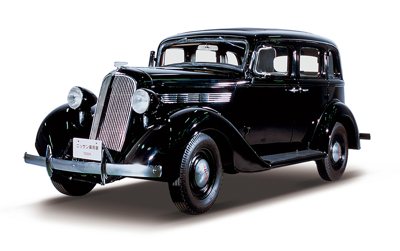 Nissan Model 70 - Nissan's First Passenger Car
Nissan Model 70 - Nissan's First Passenger Car
In 1937, Nissan introduced their first passenger vehicle, the Nissan Model 70. Using a Six-Cylinder In-Line SV engine with top speed of 50 mph, the first vehicle launched Nissan as one of the big car names in Japan. The Model 70 was a relatively large vehicle (187 inches long and 67.7 inches wide) and had a seating capacity of up to seven passengers. The car's design was heavily influenced by Austin 7 - a compact car from the UK built from the early 20s to the late 30s.
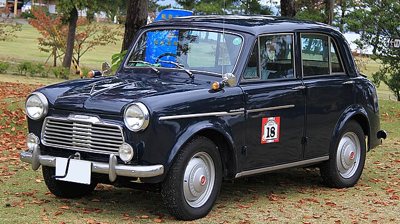 Datsun 1000 and Datsun 220 - First Nissan Vehicles for US Consumers
Datsun 1000 and Datsun 220 - First Nissan Vehicles for US Consumers
In the late 50s Nissan introduced itself to American consumers with two vehicles: the Datsun 1000 also known as the Datsun 210 and the Datsun 220. Datsun 210 was introduced in 1958 while the 220 was introduced a year before.
While both share the same platform, the 210 and 220 were two different vehicles since the 210 was a sedan and Nissan's first passenger car in the US while the 220 was a compact truck - the first compact truck in the US. Both vehicles used a 988c C-Series I4 engine with top speed of 60 mph. Both were known for their sturdiness and reliability with fuel efficiency making them a success in the US market.
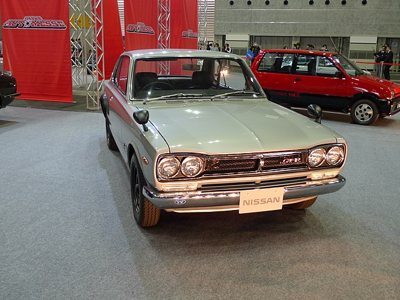 Skyline GT-R
Skyline GT-R
Like most Japanese car manufacturers after WWII, Nissan was known for making reliable and economical vehicles that could take you from one place to the other without any fuss. However Nissan launched into performance vehicles in 1969 with the introduction of the Skyline GT-R. Built specifically for speed, the car used a 2.0L S20 I6 engine with top speed of up to 120 mph. The 1969 version was a four-door sedan speedster and was followed by a two-door coupe in 1971. The GT-R name has since become an icon, and its first generation set the benchmark for what a performance car should be.
Nissan Pathfinder
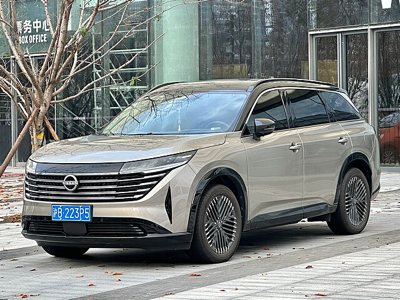 Aside from economy cars and speed demons, Nissan also successfully launched family friendly vehicles. The Pathfinder was a perfect example with a twist - it was introduced in 1986 as an off-road SUV with two engine options: 2.4L I4 or 3.9L V6 and both came with 4WD that ensured drivers could handle most road conditions.
Aside from economy cars and speed demons, Nissan also successfully launched family friendly vehicles. The Pathfinder was a perfect example with a twist - it was introduced in 1986 as an off-road SUV with two engine options: 2.4L I4 or 3.9L V6 and both came with 4WD that ensured drivers could handle most road conditions.
Pathfinder eventually became a family vehicle with the introduction of its four-door version. The model further cemented its name as a family vehicle with off-road capability in its 2nd generation which was introduced in 1996. The Pathfinder is currently in its 5th generation with the biggest version to date (198 inches long and 78 inches wide) with 3.5L V6 engine with top speed of 120 mph. Off-road capabilities on the latest generation features an intelligent 4x4 option to easily adapt to different road conditions and a towing capacity of up to 6,000 lbs.
Nissan Leaf
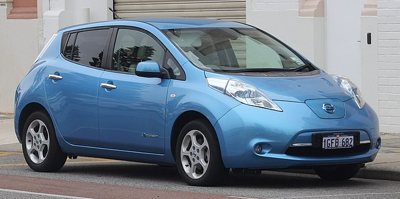 Nissan's leap into the future was the Nissan Leaf - introduced in 2010, it was one of the first full EVs in the market sporting a motor with up to 214 horsepower and 98 mph top speed. The leaf was a compact, five-door hatchback that could be used up to 109 miles on a single charge - an impressive feat in the early days of full EVs.
Nissan's leap into the future was the Nissan Leaf - introduced in 2010, it was one of the first full EVs in the market sporting a motor with up to 214 horsepower and 98 mph top speed. The leaf was a compact, five-door hatchback that could be used up to 109 miles on a single charge - an impressive feat in the early days of full EVs.
The 2025 version features an electric motor with 147 horsepower and 236 lb-ft of torque with 149 miles on a single full charge. Although a compact hatchback, it's still relatively bigger than the first generation (198 inches/78 inches). The latest generation's top speed is electronically limited to 98 mph to ensure safety and ease of control.
Nissan Rogue - One of the Leaders in Compact SUV
 Crossover SUVs are one of the most popular types of vehicles in the US because of its versatility and fuel efficiency. In that category, the Nissan Rogue is considered one of the leaders when it comes to sales as they continue to compete with the leaders through upgrades and innovations.
Crossover SUVs are one of the most popular types of vehicles in the US because of its versatility and fuel efficiency. In that category, the Nissan Rogue is considered one of the leaders when it comes to sales as they continue to compete with the leaders through upgrades and innovations.
Introduced in 2007, the Nissan Rogue is a compact crossover SUV equipped with a 2.5L QR25DE I4 engine. It shares the same platform as the Nissan Sentra and Nissan X-Trail. Made for urban driving but versatile enough for different road conditions, especially with its AWD option, it's your standard Nissan vehicle equipped with a CVT transmission for ease of driving.
Significant upgrades to the Rogue were introduced especially in its current 3rd generation. The latest version is 183.0 inches long and 72.4 inches with 8.2 inches of ground clearance which ensures that the SUV can safely navigate rough road conditions. Under the hood is a 1.5L VC-Turbo I3 engine with top speed of up to 118 mph. Safety features include ProPILOT Assist for semi-autonomous driving, automatic emergency car brakes, lane change warning and more.
The Size Evolution of Nissan Vehicles
Adapting to tech advancements and consumer needs, Nissan has always pushed itself to do what it takes to be one of the top automotive brands.
Here's a quick look at the size evolution of Nissan vehicles:
Datsun 210 (1958) - 144 inches long, 58 inches wide
Datsun 220 (1957) - 165 inches long, 60 inches wide
Nissan Skyline GT-R (1969) - 173 inches long, 65 inches wide
Nissan Rogue (2007-Present)
1st Generation - 182 inches long, 71 inches wide
Current Generation (2023) - 183 inches long, 72 inches wide
Upcoming Hybrid Version (2026) - Estimated 183 inches long, 72 inches wide
Nissan Leaf (2010-Present)
1st Generation - 175 inches long, 69 inches wide
Current Generation (2025) - Expected 176 inches long, 71 inches wide
Nissan Ariya (2020-Present) - 181 inches long, 73 inches wide
Nissan Pathfinder (2025) - 198 inches long, 78 inches wide (estimated)
Nissan Z (2025) - 172 inches long, 73 inches wide (estimated)
From compact sedans like the Datsun 210 to spacious SUVs like the Rogue and Pathfinder, Nissan's size evolution is a clear indication of its commitment to balancing comfort, utility, and performance.
The Future of Nissan Vehicles
Nissan's forward thinking attitude has always been evident in its vehicles. Starting with Nissan Leaf, the company is working on making more EVs in the future while also exploring more hybrid vehicles to provide customer with additional options. The ever popular Nissan Rogue is expected to feature a hybrid version in 2026.
